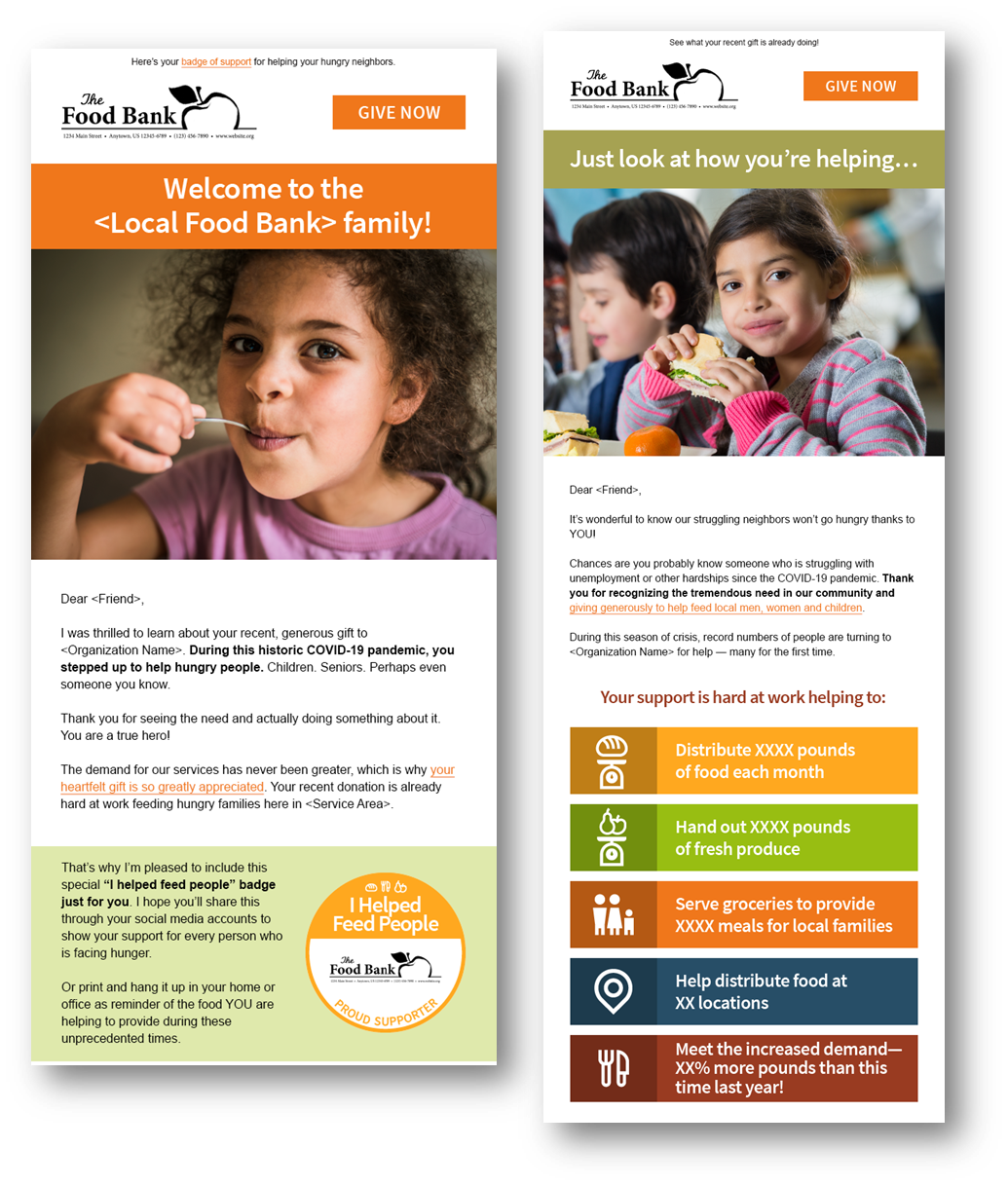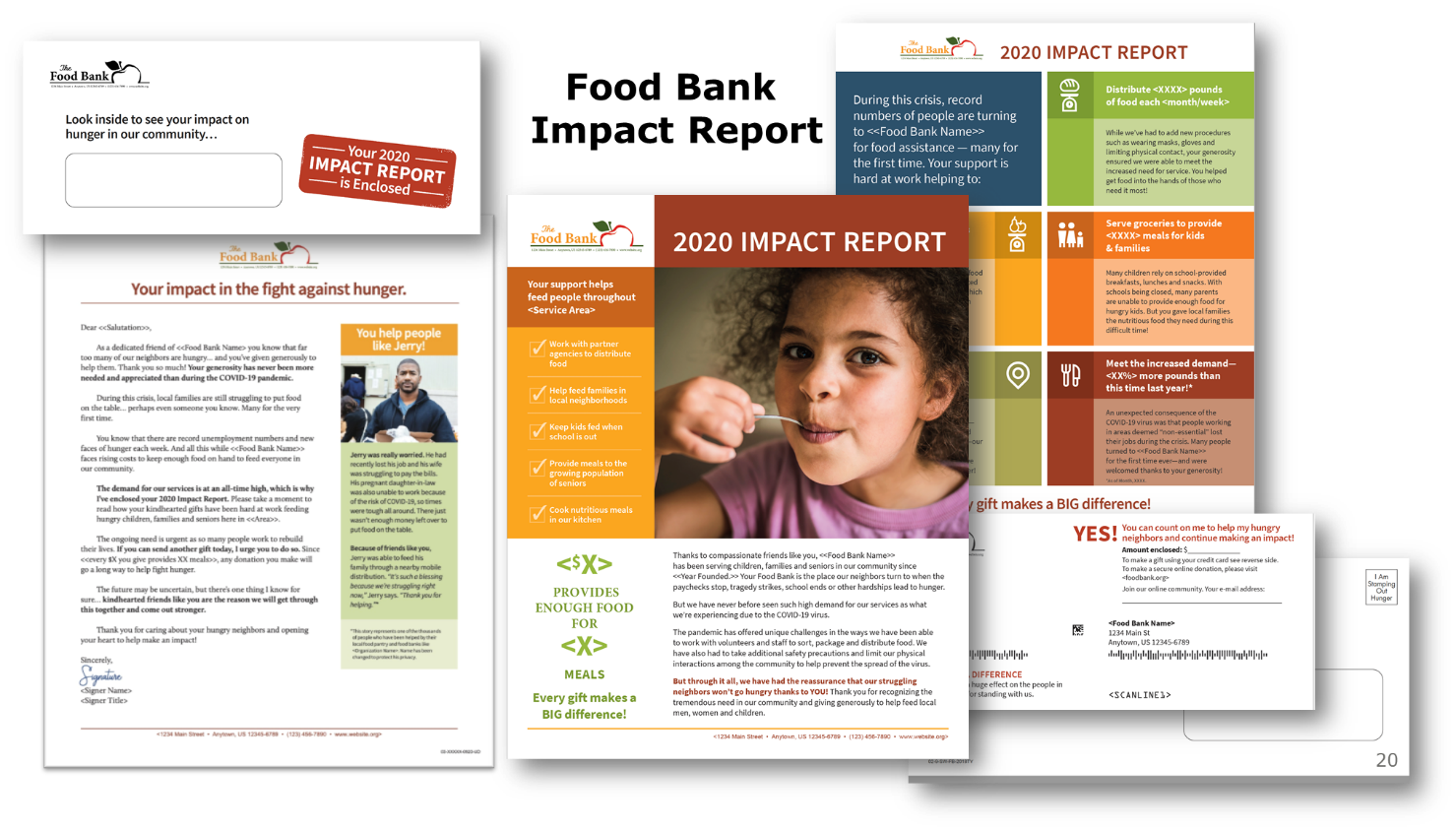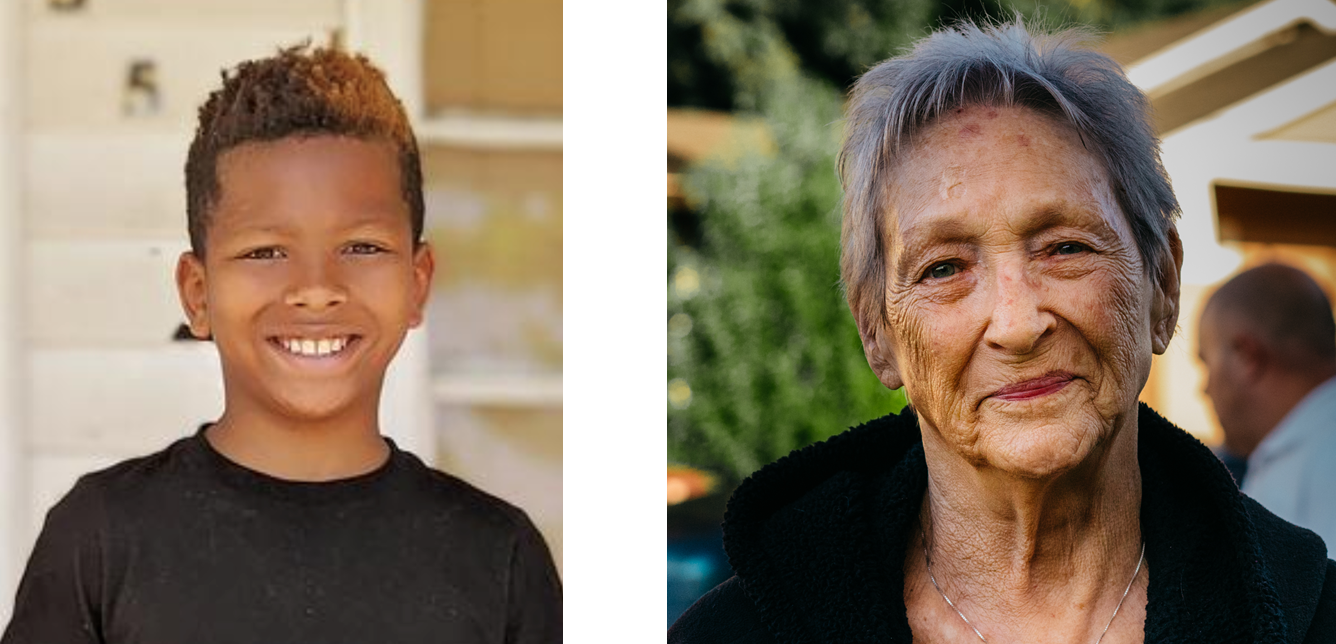A New Breed of Food Bank Donors
Learn what makes COVID-19 pandemic donors different and how to retain them
On March 11, 2020, the World Health Organization declared COVID-19 a global pandemic, setting off a chain of events that dramatically impacted food banks.
As shelter-in-place orders were issued and businesses shut down during the spring, many throughout the U.S. lost their jobs. This increased the demand at food banks by 60%, according to Feeding America.
At the same time, the food banks themselves saw a loss of volunteers and major changes in operations (supply chain adjustments, no-touch distributions, etc.) – all while the need for their services skyrocketed. From March 1 to June 30, the Feeding America network distributed an estimated 1.9 billion meals.
Donors offer their support
Thankfully, donors stepped up to the challenge and provided an amazing level of financial support to help those in need. Food banks nationwide saw a surge in giving, starting in mid-March and peaking sometime in May.
Now that we’ve had some time to reflect, let’s take a closer look at these donors. This e-book will showcase:
- Behavioral and demographic trends that have emerged after only a few months
- What makes COVID donors different from both multiyear donors and disaster donors
- Strategies on how food banks can adapt to reach this new audience across channels
Our methodology
RKD Group wanted to compare the demographics and behaviors of multiyear donors with new donors acquired during COVID-19.
We selected six food banks for our research, and we defined multiyear donors as those who actively gave in the past two calendar years (CY18 and CY19). We defined COVID-19 donors as any donor who was acquired from March 11, 2020, through June 30, 2020.
Two food banks had channel coding appended to their gift transaction. So, a third group of multiyear donors who gave their first gift online was included. It should be noted that these web-acquired multiyear donors are not representative of all six food banks.
Behavior Analysis
Not your average disaster donor
It became clear early on that COVID donors were not like typical disaster donors.
For example, a hurricane, tornado or wildfire affects a specific local area or region. The disaster brings in charitable gifts from across the nation for days or weeks, depending on the scope of the damage and the media attention.
The pandemic has affected the entire world for months, with waves of greater impact felt at different times in different areas. Donors have given to charities in their area, like food banks, trying help those in their local communities.
| COVID Donor | Disaster Donor |
| Global crisis | Local emergency |
| Lasts for months | Lasts for days/weeks |
| Local community donations | Nationwide donations |
More than just 1 gift
We found a consistent trend among the food banks we analyzed: donors giving multiple gifts in a three-month span.
In fact, 15.46% gave two or more gifts within 90 days of the first gift. Compare that to a major disaster like Hurricane Harvey, when only 2.5% of donors made two or more donations in the first 90 days.
COVID donors have been willing to help again and again as the need persisted in their communities.
First gift size
The average gift size of new COVID donors tracks closely to the typical disaster donors. Both numbers are more than double the average first gift from regular new food bank donors.
88.9% of COVID donors gave $25 or more for their first gift. And 49% – just under half – gave $100 or more.
Sustainer sign-up
Looking at the data from three large food banks, we found 1.4% of new donors acquired during COVID signed up for monthly giving.
A total of 567 new sustainers across three food banks may not seem like much on the surface. However, an average monthly gift of $70 adds up to a yearly total of $476,280 for these donors.
Strategies based on behavior
Based on what we’ve seen in the data, it’s clear that COVID donors behave differently from both disaster and multiyear donors. They give locally, they give a lot, and they give repeatedly.
Here are a few strategies to consider when cultivating these donors for future gifts:
- Acknowledge all COVID donors with an immediate thank you
- Segment out all 2+ givers to be put into the regular direct mail stream
- Segment out all who gave $25 and add them to the regular mail stream
- Welcome new donors and show how they’re making a difference

- Send special COVID updates
- Refer to COVID in various ways
- Unprecedented times
- Economic crisis
- Mail sustainer appeals
- Mail major donor appeals to $500+
- Update postcards
- Reassess at the one-year mark
- Don't suppress donors in digital
- Send impact reports

Demographic Analysis
Donor Age
COVID food bank donors are 15 years younger than the typical multiyear food bank donor. COVID donors gave primarily online, yet they averaged 6 years younger than regular web-acquired multiyear donors.
Percent married
COVID-acquired donors are 14 percentage points more likely to be unmarried than the average multiyear food bank donor. The typical digitally-acquired food bank donor is also more likely to be married.
Average number of children
COVID-acquired donors have an average of 1.33 children in the home, compared to 0.8 in multiyear donors and 1.01 in web-acquired donors.
With a younger group of donors, it’s not surprising to see more children still living at home.
Average years in residence
On average, multiyear donors have lived in their homes for three years more than COVID donors. Digitally acquired donors average one year more in their homes than COVID donors.
Median income
COVID donors tend to be wealthier than a typical multiyear food bank donor, with a median income that is $7,312 higher. The median income of COVID donors is also $3,509 higher than the average digitally acquired donor.
Again, the younger age of COVID donors means they are more likely to still be in the workforce, bringing in an income.
Median donor capacity
COVID donors fall $311 below multiyear donors in median donor capacity. Despite having a higher income, COVID donors likely have not accumulated as much wealth over time due to their younger age.
However, COVID donors have a much higher donor capacity – $1,447 more – than digitally acquired multiyear donors. That’s despite being six years younger on average.
Strategies based on demographics
Generally speaking, COVID-19 donors are demographically similar to multiyear food bank donors in terms of income, net worth and giving capacity. However, there are some key differences.
COVID 19 donors:
- Are on average 15 years younger
- Are more likely to be single
- Are nearly twice as likely to have children in the home
- Have lived in their homes for three fewer years
Here are a few strategies to consider when cultivating these donors for future gifts:
- Test messaging and images
- Children vs. elderly

- Use social for campaigns
- Cross-post in all social channels
- Boost posts in Facebook to reach a larger audience
- Upload donor email lists for media targeting
Based on the wealth capacity of these COVID donors, try these tactics:
- Test ask strings
- Last gift amount vs. largest gift amount
- Last gift amount vs. cumulative giving
- Start array at upgrade 1 amount
- Email segmentation for testing
- Use upgraded packages
- Invitation to giving society
- Donor advised fund (DAF) giving options
- Insider information from CEO
- Opportunity to work with major gift officer
Key takeaways
Food banks have seen a surge in giving from donors during the COVID-19 pandemic. Based on the behavioral and demographic differences that have emerged, here are a few important things to keep in mind as you continue to cultivate this new breed of food bank donors:
- If you ask, they will give
- 15%+ made a second gift within 90 days of the first gift
- If you ask for a long-term commitment, they are ready to oblige
- 4% have already become sustainers
- Once committed, treat them like the mid-major donors they are
- 49% of first gifts were $100+
- Test talking to their demographic
- 53 years old, single, parent, above-average income, etc.
- 53 years old, single, parent, above-average income, etc.
Using this knowledge, you can convert these donors to your mission and begin to build a lasting, long-term relationship with them.
More Than 40 Years Inspiring Donors
With RKD, you get a powerful partner poised to help you achieve breakthroughs never thought possible.
Dedicated
Team of Experts
We work tirelessly to help you build deeper relationships with your donors and grow net revenue for expanding your missions.
Devoted to
Your Success
Our work is a calling, not an occupation. We work with you, hand-in-hand, to achieve breakthroughs that increase your donor reach and spark meaningful engagement.
.Unlock Your Breakthrough
We've helped hundreds of nonprofits raise funds to fulfill their missions and make a lasting impact on our world. If you're ready to spark meaningful constituent engagement and fuel an omnichannel fundraising program, we're ready too!
Complete the form below and we'll get the conversation started.
A clear and bold header
Something Powerful
Tell The Reader More
The headline and subheader tells us what you're offering, and the form header closes the deal. Over here you can explain why your offer is so great it's worth filling out a form for.
Remember:
- Bullets are great
- For spelling out benefits and
- Turning visitors into leads.
